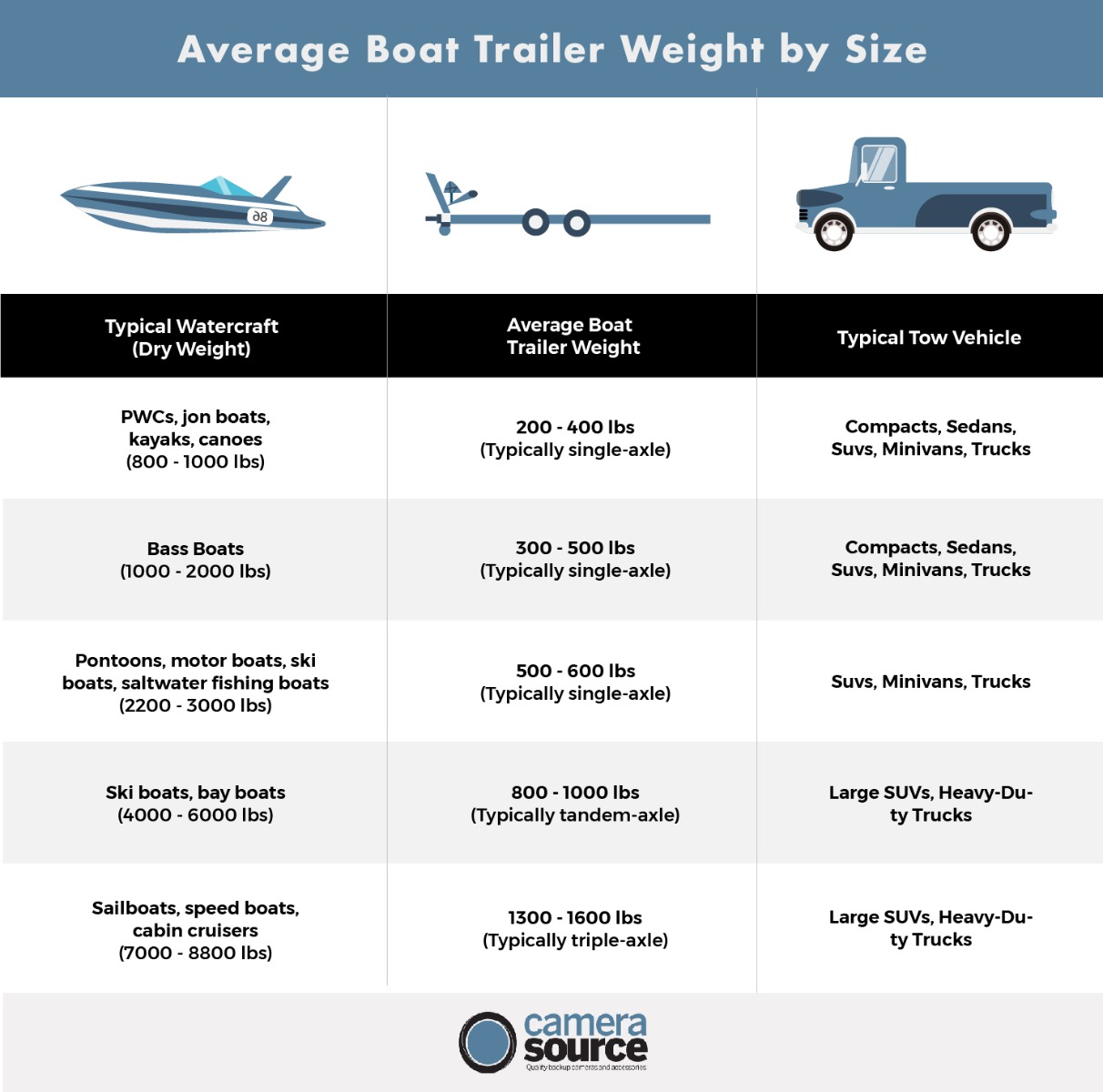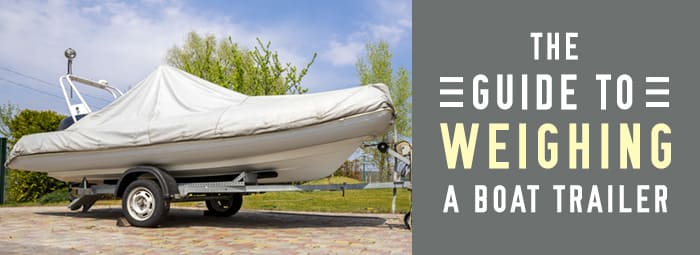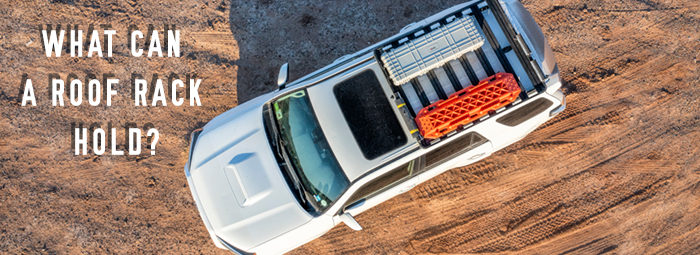So you need to weigh your boat trailer. Maybe it’s for registration purposes (similarly to a utility trailer), or maybe it’s to make sure you don’t overload your rig (similarly to a roof rack or SUV) for a safe trip.
So, how do you weigh a boat trailer? Well, there are a number of ways to make the weighing magic happen, and in this article, we’ll cover all the different ways to get the job done.
While you’re on the topic of your boat trailer weight, you should also think about its safety on the road, and consider installing a backup camera. Camera Source has the backup cameras and front and side cameras that make loading, hitching, hauling, launching, and parking your vehicle and boat trailer safer and easier. Keep reading for more tips and tricks to make loading your boat trailer safe and easy.

Option 1. Calculate Boat Trailer Weight Based on Capacity Plate
Your boat trailer should have a capacity plate listing the Maximum Capacity, Gross Vehicle Weight Rating (GVWR), and Gross Axle Weight Rating (GAWR). According to Boat.U.S., it should look something like their below example:

To find the weight of the trailer, simply subtract the trailer’s maximum capacity from the GVWR and you're left with the weight of the trailer.
On average, boat trailers weigh anywhere from 200 lbs to 1,600 lbs.
- Single-axle boat trailers typically weigh up to about 600 lbs and have a capacity up to about 3,300 lbs.
- Tandem-axle boat trailers usually weigh up to around 1,000 lbs. Some tandem-axle trailers can support boats up to around 8,000 lbs, but this is the weight at which you'd consider a triple-axle trailer.
- Triple-axle trailers usually weigh between 1,000 and 1,600 lbs. These trailers are designed for heavy-duty boats around 8,000 lbs to 10,000 lbs.
If you’re uncertain about your calculation, here are average boat trailers weight and capacity by size for a frame of reference:
|
Trailer Boat Size |
Trailer Weight Capacity |
Trailer Weight |
|
12 to 14-foot boat |
400 pounds |
150 pounds |
|
15 feet boats |
1,500 pounds |
410 pounds |
|
20-foot boats |
6,000 pounds |
1,000 pounds |
|
18-foot boats |
3,100 pounds |
630 pounds |
|
18-foot boats |
1,800 pounds |
420 pounds |
|
22-foot boats |
4,800 pounds |
980 pounds |
|
24 to 25-foot boats |
6,425 pounds |
900 pounds |
|
25-foot boats |
8,600 pounds |
1,320 pounds |
|
24 to 28-foot boats |
7,000 pounds |
1,630 pounds |
If you’re skeptical of the capacity plate and math skills to determine your boat trailer weight, then it’s time to weigh it.
Option 2. Weigh Your Boat Trailer on a Truck Scale
The simplest and fastest way to weigh a boat trailer is to take it to a truck scale. Locations capable of weighing trucks and boat trailers include but may not be limited to:
- Truck stops
- Weigh stations
- Junk yards
- Landfills
- Gravel yards
- Freight yards
- Grain elevators
- Grain and feed stores
- CAT scales
- RV lots
Many locations have the ability to weigh your trailer, just make sure you call ahead first to ensure that they have the availability so you can weigh it.
Option 3. How to Weigh Your Boat Trailer at Home
If you don’t have a weigh station nearby, don’t worry, you can also weigh your trailer with, funnily enough, a bathroom scale. Here’s a step by step guide of how to weigh a boat trailer at home with a bathroom scale:
Step 1. Level out the trailer
Being level is important when getting an accurate weight. Make sure that the wheels are chocked so the trailer cannot roll.
Step 2. Prepare the ground
- Take a reliable board, like a 2x4, and place it directly below the trailer’s tongue. The board needs to be at least 3.5 feet long for this to work.
- Place the bathroom scale roughly 2 feet in either direction from the trailer tongue, and a block or brick about 1 foot from the trailer tongue the opposite end from the scale. You’ll want to protect the bathroom scale with a small piece of plywood or other material on the top.
- Insert two horizontal pipes between the 2×4 and scale/brick: one in the center of the bathroom scale and one in the center of the brick.
Step 3. Weigh it on the Scale
Lower the trailer jack until the coupler is fully resting on a vertically-positioned pipe. Read the scale and multiply by 3. The average bathroom scale can’t do the entire weight, hence the multiplier.
Weighing a Boat on a Trailer at Home
If you happen to find yourself needing to weigh the boat trailer with the boat still on it, the process of weighing a trailer on a bathroom scale can also provide the weight of the boat while keeping the boat on the trailer the entire time.
Repeat the above process, but now record the weight.
Next, slide the boat aft on the trailer 12" to 18". You must measure exactly how many inches you moved it, and record that. With the scale in the same location under the tongue, record the new scale reading.
Finally, measure the distance in inches between the trailer axle (wheel centerline) and the point on the tongue where it touches the scale. You have then four measurements:
- W1 = first (heavier) scale reading in lbs
- W2 = second scale reading in lbs
- X = the distance you shifted the boat in inches
- C = distance between trailer axle and scale point in inches
The formula is: Boat Weight = C (W1-W2)/X
Now, there might be some error here, so if you don’t think you’re getting the right measurements, it might be prudent to take it to a weigh station.
Eliminate the guesswork while hitching, loading, and launching your boat on the trailer and get a boat trailer backup camera instead! At Camera Source, we have the tools and equipment to help you outfit your rig with whatever you need. Get in touch with us today!








